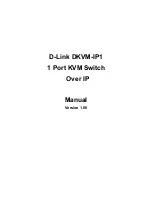
Concept
Explanation
Ring Health-Check
Frame (RHF)
The Master node generates two types of RHFs. RHFs never loop the ring because
they terminate at the Master node’s secondary port.
•
Hello RHF (HRHF)
— These frames are processed only on the Master node’s
Secondary port. The Transit nodes pass the HRHF through without processing
it. An HRHF is sent at every Hello interval.
•
Topology Change RHF (TCRHF)
— These frames contains ring status, keepalive,
and the control and member VLAN hash. The TCRHF is processed at each node
of the ring. TCRHFs are sent out the Master Node’s Primary and Secondary
interface when the ring is declared in a Failed state with the same sequence
number, on any topology change to ensure that all Transit nodes receive it.
There is no periodic transmission of TCRHFs. The TCRHFs are sent on triggered
events of ring failure or ring restoration only.
Implementing FRRP
• FRRP is media and speed independent.
• FRRP is a Dell proprietary protocol that does not interoperate with any other vendor.
• You must disable the spanning tree protocol (STP) on both the Primary and Secondary interfaces
before you can enable FRRP.
• All ring ports must be Layer 2 ports. This is required for both Master and Transit nodes.
• A VLAN configured as a control VLAN for a ring cannot be configured as a control or member VLAN
for any other ring.
• The control VLAN is not used to carry any data traffic; it carries only RHFs.
• The control VLAN cannot have members that are not ring ports.
• If multiple rings share one or more member VLANs, they cannot share any links between them.
• Member VLANs across multiple rings are not supported in Master nodes.
• Each ring has only one Master node; all others are transit nodes.
FRRP Configuration
These are the tasks to configure FRRP.
•
•
– Configure Primary and Secondary ports
•
Configuring and Adding the Member VLANs
– Configure Primary and Secondary ports
Other FRRP related commands are:
•
•
Viewing the FRRP Configuration
Force10 Resilient Ring Protocol (FRRP)
385
Summary of Contents for S4820T
Page 1: ...Dell Configuration Guide for the S4820T System 9 8 0 0 ...
Page 282: ...Dell 282 Control Plane Policing CoPP ...
Page 622: ...Figure 81 Configuring Interfaces for MSDP 622 Multicast Source Discovery Protocol MSDP ...
Page 623: ...Figure 82 Configuring OSPF and BGP for MSDP Multicast Source Discovery Protocol MSDP 623 ...
Page 629: ...Figure 86 MSDP Default Peer Scenario 2 Multicast Source Discovery Protocol MSDP 629 ...
Page 630: ...Figure 87 MSDP Default Peer Scenario 3 630 Multicast Source Discovery Protocol MSDP ...
Page 751: ...10 11 5 2 00 00 05 00 02 04 Member Ports Te 1 2 1 PIM Source Specific Mode PIM SSM 751 ...
Page 905: ...Figure 112 Single and Double Tag First byte TPID Match Service Provider Bridging 905 ...
Page 979: ...6 Member not present 7 Member not present Stacking 979 ...
Page 981: ...storm control Storm Control 981 ...
Page 1103: ...Figure 134 Setup OSPF and Static Routes Virtual Routing and Forwarding VRF 1103 ...
















































